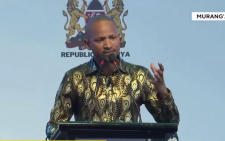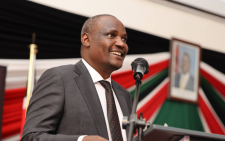Report paints grim image on country’s healthcare

A new report has painted a grim picture of the healthcare situation in the country, indicating that despite several positive factors of progress since 2017, millions of Kenyans are living in poverty.
While only a few Kenyans can access quality healthcare, millions could be dying silently as the only form of health insurance is through the defunct National Health Insurance Fund (NHIF), which is still not sufficient.
The report by Twaweza Kenya shows that a significant number of those entitled to free treatment do not receive it in practice. And this is even as nearly half a million Kenyans are not seeking medical care due to lack of resources.
“Among those entitled to free treatment under national policy – young children with malaria, pregnant women and the elderly – a significant proportion do not receive this entitlement in practice,” the report is quoted.
The last time they sought treatment according to Twazeza’s Sauti za Wananchi mobile-phone panel survey,, four out of ten children with malaria, accounting for 37 percent did not receive free treatment, while two out of ten pregnant women, about 21 percent, also did not, and over half, around 55 percent of those aged over 60 years did not get free treatment.
Database
The panel of 3, 603 respondents were created randomly sampling from an existing database of over 250,000 to establish a national representation.
The survey found out that across all these types of cases, however, access to free treatment entitlements has increased since 2017.
It also found out that most citizens are aware that the government has established community health workers across the country.
“Seven out of ten Kenyans, accounting for 68 percent, are aware that the government has established a network of community health workers across the country, and one out of four citizens, about 26 percent, has already received some form of service from the new health workers,” the report cites.
Dr James Ciera, Twaweza Kenya country lead, noted that whereas these figures are broadly consistent across women and men but contact with community health workers has been lower in Nairobi, accounting for 18 percent than other urban areas, about 28 percent and rural parts of the country, about 26 percent.
About 55 percent of Kenyans, the survey shows, mainly understand that the role of community health workers is to deliver health information and services to the local community, or to visit those who are unable to attend health facilities, about 38 percent in their homes.
Health workers
“Other functions of the health workers are less well known, including health promotion, about 23 percent and data collection, which is 11 percent,” he said.
Dr Ciera pointed out that with the introduction of the Social Health Insurance Fund (SHIF), which is to be unveiled officially in early July 2024, Twaweza found it necessary to take stock of Kenyans’ experiences of healthcare services to date.
The SHIF has been described by the government as aiming to provide comprehensive coverage to all Kenyans, and as representing a significant milestone on the journey towards Universal Health Coverage (UHC). Under the scheme, vulnerable populations will gain access to a broad spectrum of benefits, including screening, some transplants, essential medications, and access to vital medical equipment.
“At Twaweza we felt it’s time to conduct a health check of the sector, including the current most widely accessed form of health insurance, the National Health Insurance Fund.











